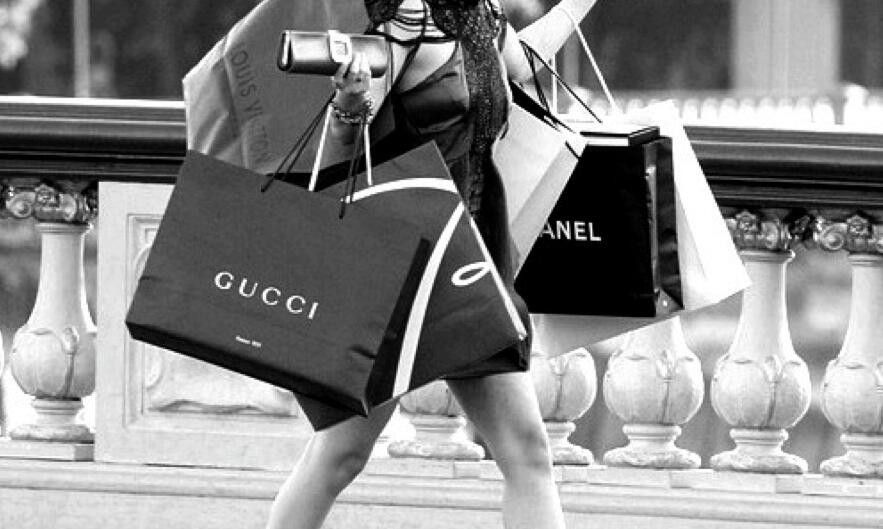Balenciaga - more than just a hype brand
- Darren De Hahn

- May 16, 2019
- 3 min read
When we hear the name "Balenciaga" we all think about the same thing. Chunky sneakers with thick soles. Slim shoes with sock-like uppers. Logo mania and maximalist energy all form the core of this instantly recognizable brands identity right? Wrong.

That sounds a bit aggressive but give me some time to explain.
Let's get started.
Balenciaga was founded in 1917 by Cristóbal Balenciaga. The Spanish designer after years of on the job training with an experienced tailor opened his first boutique in San Sebastián, Spain with future stores opening in both Madrid and Barcelona.
His primary focus was womenswear and his designs were well received by the royal family and upper class due to the expert quality craftsmanship and attention to detail.
Cristóbal was forced to close all his stores in Spain as a result of the Spanish Civil War and opened his first Paris couture house in 1937.
The transition was without a doubt a difficult one but by no means hindered his success.
Paris provided the brand with a bigger stage and coupled with Cristóbal's revolutionary designs would catapult Balenciaga into the spotlight.

"The master of us all"
These were the words used by the renowned Christian Dior when referencing the designer, and for good reason.
During a time when Dior himself dressed women primarily in fitted garments with slim waists and skirts cut below the knee, Balenciaga declined to do the same.
Always being a rule breaker and refusing to follow trends resulted in the brand instead creating their own.
The brands womenswear line consisted of boxy shapes, layered fabric, noteworthy structure and exquisite detailing. These chic and ultra modern looks broke ground within the fashion industry throughout the 1950's and allowed Cristóbal the opportunity to make a name for himself as the leading pioneer of haute couture.
His continuous innovation left people wondering what he would do next.
It was standard that a designers collection be shown to fashion publications four weeks prior to being delivered in stores. In 1957 Balenciaga and his protege at the time, Hubert de Givenchy, made the infamous decision of displaying his latest collection not more than a day before the expected store release. This was done to prevent others from copying his designs and claiming them as their own.
The decision was not well received with magazine companies finding it near impossible to photograph and print Cristobal's offerings due to publishing deadlines.
He was unbothered however and in fact showed no interest in press or media coverage.
It was his intention that the clothes speak for themselves.
It is interesting to note that Cristóbal's rebellious ways resulted in his creations never truly being haute couture. Well, at least not technically.
Haute couture directly translates to "high fashion". In order for a garment to be labeled haute couture it needs to meet strict requirements such as being of the highest quality, custom made for select individuals and constructed completely by hand from start to finish. Most importantly one has to be granted personal approval by the Chambre Syndicale de la Haute Couture (Trade Association of High Fashion) as eligible of being called a true haute couture fashion house.
In simple English, there exists an elite group of people within Paris high up in the fashion ranks with the responsibility of deciding which design houses have the privilege of being classified as producers of haute couture.
Balenciaga opposed the rules and regulations of what he considered a "bourgeoisie" society and thus never joined or became a member. This act of defiance prevented Balenciaga from being labeled a haute couture house although his exquisite craftsmanship and general exclusivity would classify the brand as high fashion by any other means.

Throughout the years Balenciaga managed to maintain its image of intricate simplicity while still remaining provocative in nature.
Today, well things are a bit different.
There is no doubt that the brand continues to push boundaries however for reasons not quite the same. Think seven layered windbreaker coats instead of bold shapes. Exaggerated proportions instead of delicate tailoring. Maximalism instead of minimalism. All of this combined made today's Balenciaga the most searched brand of 2017.
Their influence is undeniable.
All things considered it's easy to see how brand history could get lost behind the sensationalism created by celebrities and fashion influencers alike.
Cristóbal Balenciaga placed a lot of time and hard work into building his empire and it is of great importance that we both respect and appreciate his contribution to the fashion world.
What he has left behind continuously changes the way we view clothing and would go on to inspire the revolutionary designers of the future.







Σχόλια